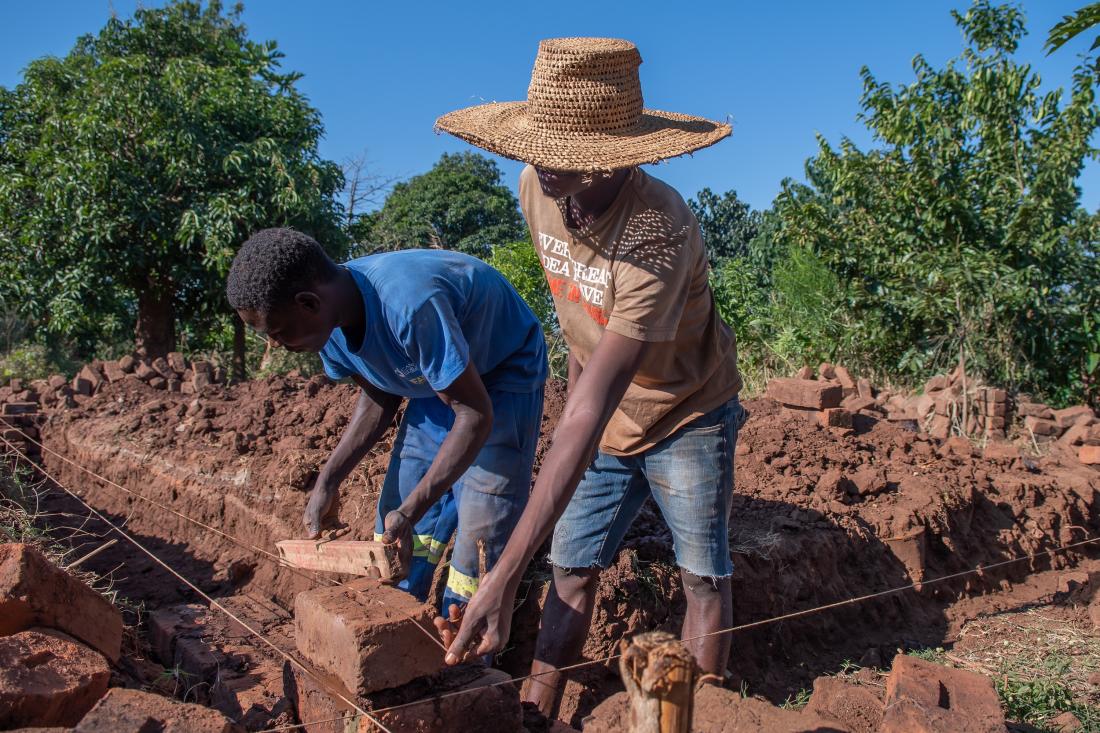Direct and Indirect Effects of Malawi’s Public Works Program on Food Security
- Families and households
- Food security and nutrition
- Social service delivery
- Fertilizer and agricultural inputs
Malawi’s public works program is the largest social protection scheme in one of the world’s poorest countries. Although public works programs are widespread, they can be costly, and there is limited evidence of their effectiveness. Researchers worked with the Malawi Social Action Fund to conduct a randomized evaluation of the program’s effect on food security. They found no evidence that the program improved food security, and there were some indications that the program decreased the food security of non-beneficiaries living in the same communities as program participants.
Policy issue
Public works programs, in which beneficiaries work in order to receive a cash or in-kind payment, are common social protection programs in low-income countries.1 Governments often use these programs to protect poor households in the face of large macroeconomic shocks or famines, largely due to their relatively rapid rollout.2 In addition, many national, multi-faceted social protection programs include a public works component. Such programs are widespread in Africa, where 39 of 48 sub-Saharan African countries have government-supported public works programs.3 Although public works programs are common, they can be costly, and there is limited evidence on whether they improve participants’ consumption and food security.
Context of the evaluation
Malawi’s public works program, which operates under the Malawi Social Action Fund (MASAF), has provided short-term, labor-intensive employment opportunities to poor households since the mid-1990s. In 2012, the government doubled the size of the program to reach approximately 500,000 households per year. The program aims to improve lean season food security and increase the use of fertilizer, which could increase farm productivity in the next harvest season.
The program runs in two 24-day cycles per year, and projects include road rehabilitation or construction, afforestation, and irrigation. The first cycle is during planting season (October through December); this timing aligns with the distribution of fertilizer subsidies. The second cycle typically occurs after the harvest (June and July). During the research period in 2012-2013, the program paid a wage of was MWK 300 per day, meaning that participants could earn up to MWK 14,400 (approximately US$44) through the program each year, a significant amount in a country with a per capita income of US$320.

Details of the intervention
Researchers worked with the Malawi Social Action Fund (MASAF) to conduct a nationally-representative randomized evaluation assessing the impact of Malawi’s public works program on participants’ food security and fertilizer use. Researchers randomly assigned villages to participate in one of four versions of the public works program or serve as a comparison group that did not participate in the public works program at all. Within villages assigned to the public works program, researchers randomly selected households to receive offers to participate.
All four versions of the public works program were the same along two important dimensions: wage and duration. This enabled the research team to analyze the effect of working for 24 days in a survey collected early in the lean season, when all four groups had completed one work cycle.
The four versions of the program varied along two dimensions: timing and payment frequency. In two groups of villages, the program’s second cycle took place during the lean season (groups 1 and 2), rather than during the harvest season (groups 3 and 4). This variation allowed researchers to investigate whether the program could have a greater impact on food security during the lean season than during harvest. Furthermore, participants in two groups of villages were paid on a split payment schedule, where participants received five equal payments three days apart (groups 1 and 3), rather than the usual lump sum (groups 2 and 4). This allowed researchers to examine whether split payments could help participants spend their earnings more smoothly.
Results and policy lessons
Malawi’s public work program did not improve food security during the 2012-2013 study period, nor did it increase use of fertilizer or ownership of durable goods. Researchers used a variety of survey measures to assess households’ food security; according to all eight measures and a summary index that combine them, the program did not improve food security.
Furthermore, there was also some evidence that the program negatively impacted non-participating households in villages where other households were randomly selected to participate in the program. According to some measures, these non-participant households had lower food security at the end of the program in comparison to households in villages where the program was not offered at all.
Scheduling the second cycle of the program to coincide with lean season did not increase the program’s effectiveness. Food security was not higher for those who worked during the lean season than for those who worked during harvest. This was true even during the months between the lean and harvest seasons, when the lean season group of participants had worked for two cycles but the harvest season group had not.
Researchers explored several potential reasons to explain the ineffectiveness of the program, but found no evidence that the program raised prices by injecting cash into the economy, reduced households’ work on their own farms or in the local labor market, or increased labor costs for households hiring workers. Identifying why the public works program was unsuccessful—and finding ways to improve it—is a priority for researchers and policymakers. The research team is continuing to collaborate with MASAF to study ways to improve the program.
Grosh, Margaret, Carlo del Ninno, Emil Tesliuc, and Azedine Ouerghi. 2008. For Protection and Promotion: The Design and Implementation of Effective Safety Nets. Washington DC: The World Bank.
Ravallion, Martin. 1999. “Appraising Workfare.” The World Bank Research Observer, 14(1): 31–48.
World Bank. 2015. “The State of the Social Safety Nets 2015.” Washington DC: World Bank.


